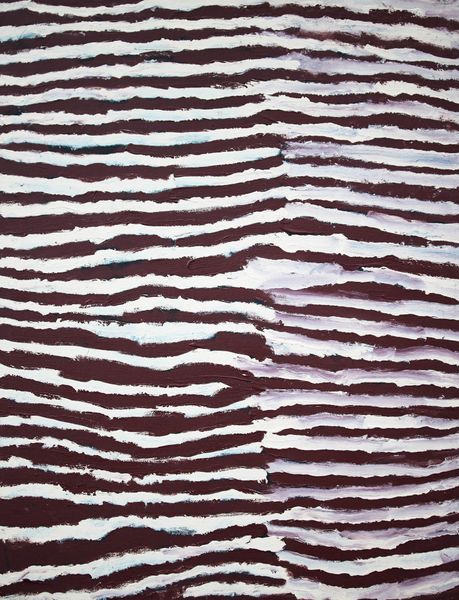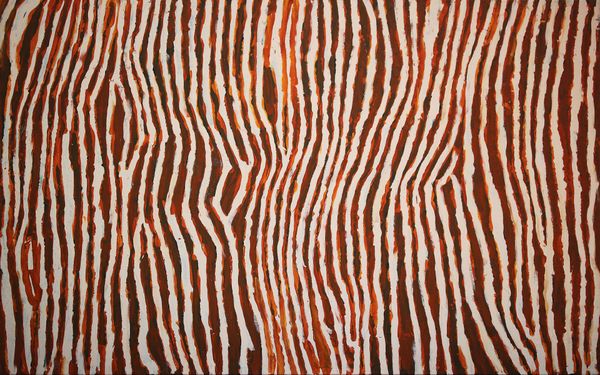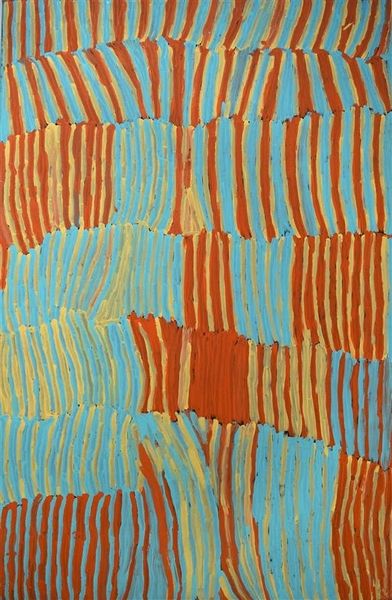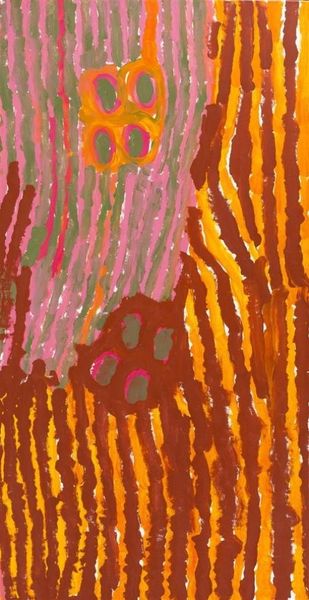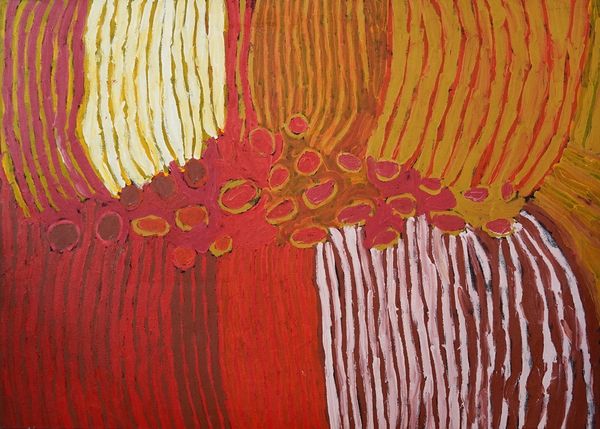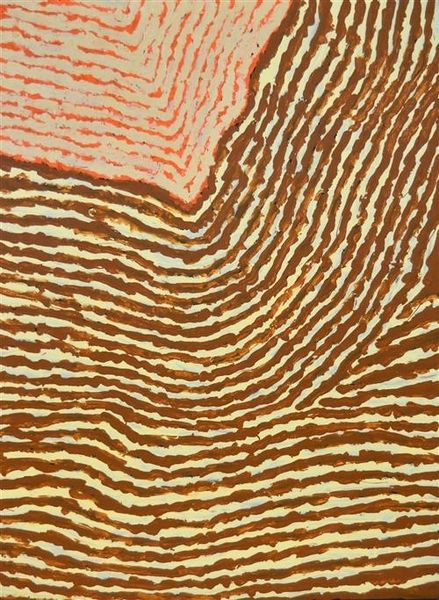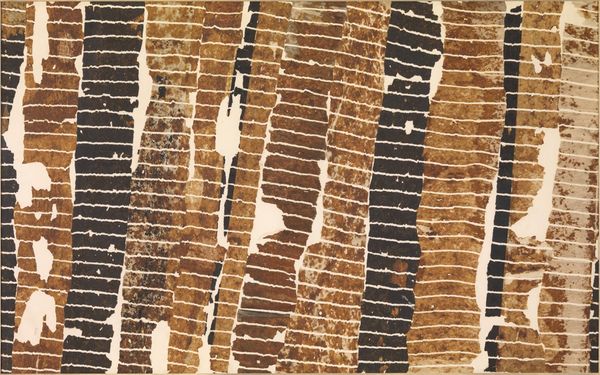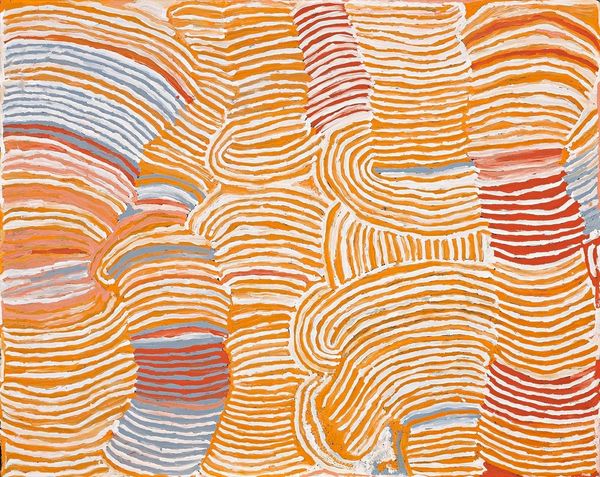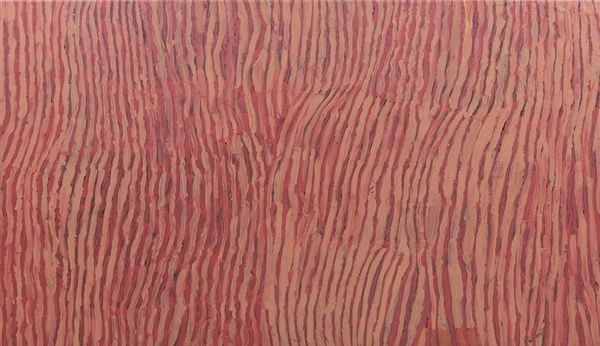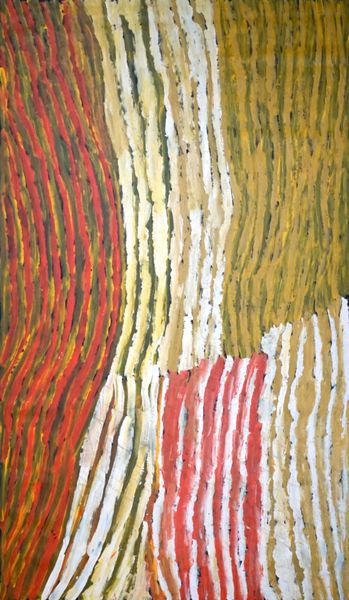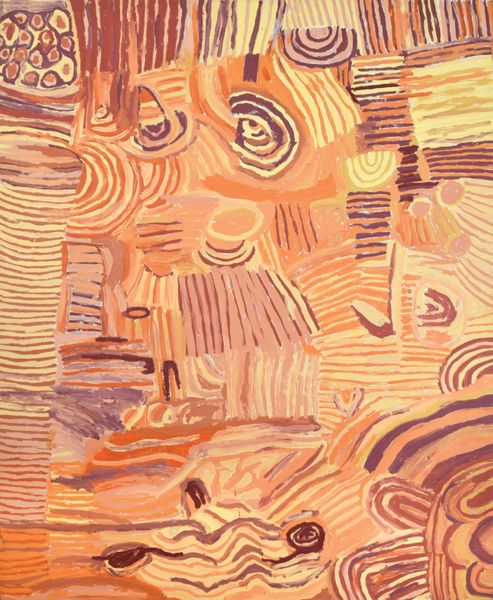
painting, acrylic-paint
#
painting
#
acrylic-paint
#
organic pattern
#
abstraction
#
abstract art
Copyright: Makinti Napanangka,Fair Use
Curator: Right, let’s talk about Makinti Napanangka's "Kungka Kutjarra (Two Women/Hair String Ceremony)" from 2008, made with acrylic paint. My first impression? A kind of pulsating rhythm, almost hypnotic. It feels very connected to the earth, somehow both raw and sophisticated at once. Editor: You know, it strikes me how this piece fits within a broader discussion about the commercialization of Indigenous art. We see this push to elevate these cultural objects within Western gallery settings, often distancing them from their original ritual and social contexts. The market plays a big role in dictating the value and meaning of this work. Curator: That's such a key point! And yet, despite that, I sense something incredibly private in this, it feels deeply held. The repetitive lines – it's like watching someone chanting, utterly lost in their world. The subtle palette creates this shimmering quality that I can’t help but connect with. It feels so incredibly grounded. Editor: The composition also challenges typical Western art aesthetics. Instead of foreground and background, there's an all-over quality that decentralizes the visual field, kind of resisting our gaze, which is interesting. Curator: Yes! It asks you to enter the painting rather than simply observe it. It is like the landscape folding into itself. I think that has always fascinated me, you see a place represented, not as scenery, but as something lived. The string ceremony it depicts, feels evoked rather than shown. What a paradox. Editor: Exactly! This work reminds us that art isn't produced in a vacuum, which brings us back to thinking about how colonialism and the global art market have influenced how Aboriginal art is displayed and consumed. What is at stake for the community with each piece placed in our Western museums? Curator: An ethical question. Always. What do you think we, the spectators, take away from standing in front of it now? Is the cultural exchange truly a two-way stream, or just another kind of extraction? Editor: Hopefully a seed for greater curiosity and reflection, definitely. And maybe a renewed awareness of the stories behind the objects and what our role can be in respecting those origins. Curator: To me, it will continue to evoke the quiet power of ritual, memory, and of women.
Comments
No comments
Be the first to comment and join the conversation on the ultimate creative platform.
